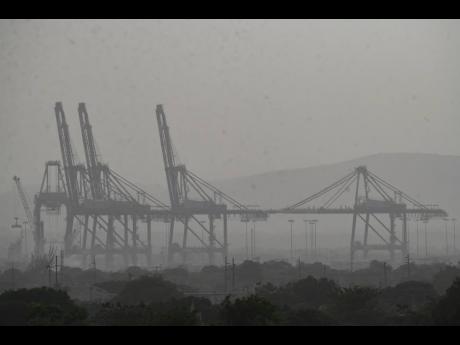Saharan dust warning for Jamaicans - Persons with respiratory illnesses urged to take cover
JAMAICANS PRONE to respiratory illnesses have been warned to take precautions as swathes of the country become covered with the hazy Saharan dust.
The phenomenon is expected to be concentrated in the island for the next three days.
Several times a year between spring and fall, a thick dust cloud known as the Saharan Air Layer makes a 5,000-mile westerly trip from the northern Africa desert to North and Central America with trade winds.
The Meteorological Service of Jamaica has confirmed that this year’s plumes of dust are much thicker than in previous years.
With the global COVID-19 pandemic already posing fatal risks to persons suffering from respiratory conditions, Keron Crossman Johnson, environment health specialist in the Ministry of Health, said that the Saharan dust could inflame vulnerabilities.
Crossman Johnson has cautioned that overexposure could prove hazardous “dependent on the health status of the individual, because for COVID-19, there are persons who are asymptomatic, there are persons who are having mild symptoms, and there are persons who we would call chronic.
“For the persons who are not mildly symptomatic, they can be affected fatally.”
The environmental health specialist said that the ministry had not yet done conclusive checks on the concentration of particulate matter, but noted that “we know there has been an increase”.
The health specialist also said that the Saharan dust could result in increased reports of allergies and eye and skin irritation.
Therefore, persons have been urged to avoid going outdoors unless necessary and, if they do so, to wear face masks, long-sleeved clothing, and to wash their hands regularly.
Rainwater danger
Crossman Johnson also warned that individuals who harvest rainwater might also become sick because of microorganisms carried with the dust. Such catchments must be covered, she said.
Rohan Brown, duty forecaster at the Meteorological Service of Jamaica, told The Gleaner that the hazy conditions were expected to affect sections of most parishes and that warmer temperatures were anticipated. The chances of rainfall would be reduced, he said.
“What occurs is that the dust particles themselves directly absorb and scatter solar radiation, and because of the increase in the dust particles, it changes the profile of the atmosphere so at the bottom is cooler and the top is warmer, so as a result, this radiative effect causes a stabilisation of the atmosphere and suppresses the convective activity associated with rainfall,” Brown said.

